Rain Barrels
Rain barrels are great water-saving devices and ideal for gardens!
Rain barrels:
• sit underneath a downspout to collect water from the roof each rain event
• capture and hold water to be used when you need it in your yard
• help save groundwater resources, utilizes higher quality water for plants
• decrease water and sewer bills
• reduce the amount of pollution (motor oil residue, road salt, etc.) that could be picked up from the rain water as it passes over driveways and roads before it enters local streams and rivers
Capturing rain water can help you save money on utility bills—especially because the water is practically free (minus the cost of the collection system). The roof of a 1,000-square-foot house can collect around 600 gallons per one inch of rain—that’s enough free water to fill more than 15 bathtubs!
Here are a few examples submitted from properties across Pennsylvania:


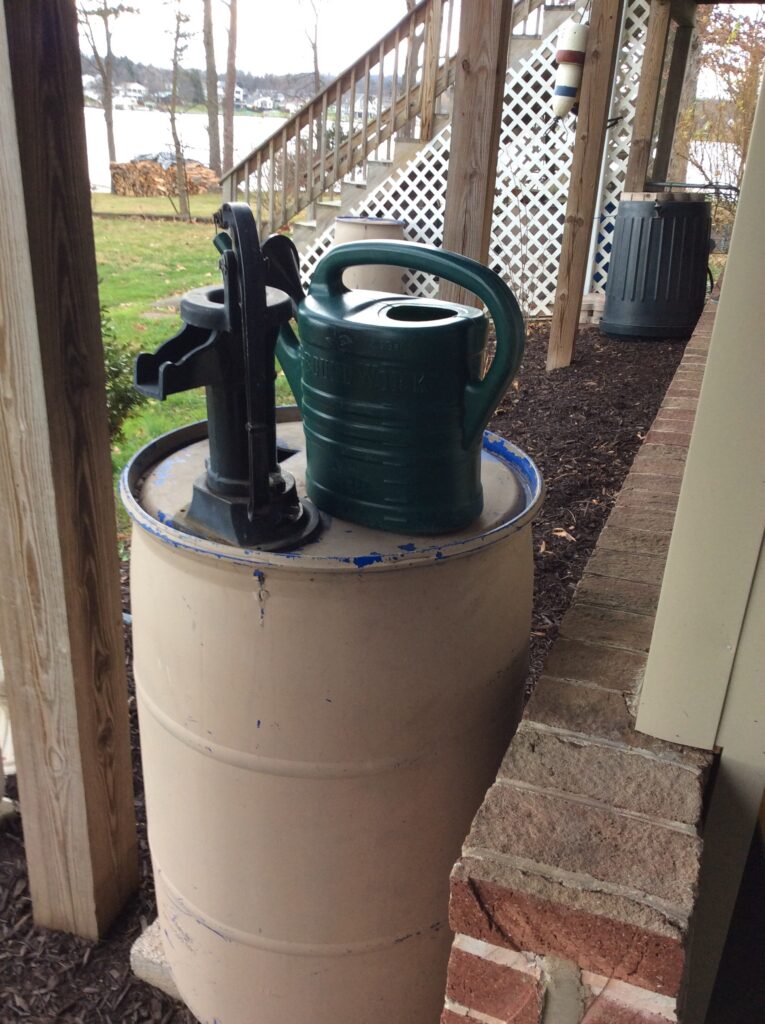

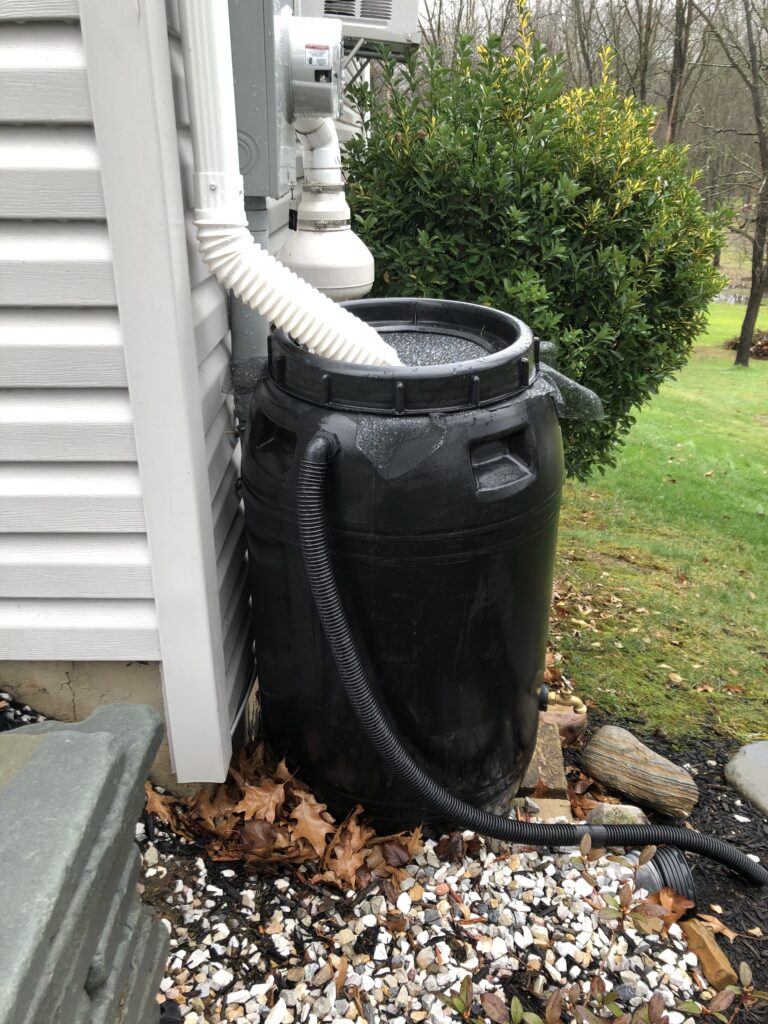
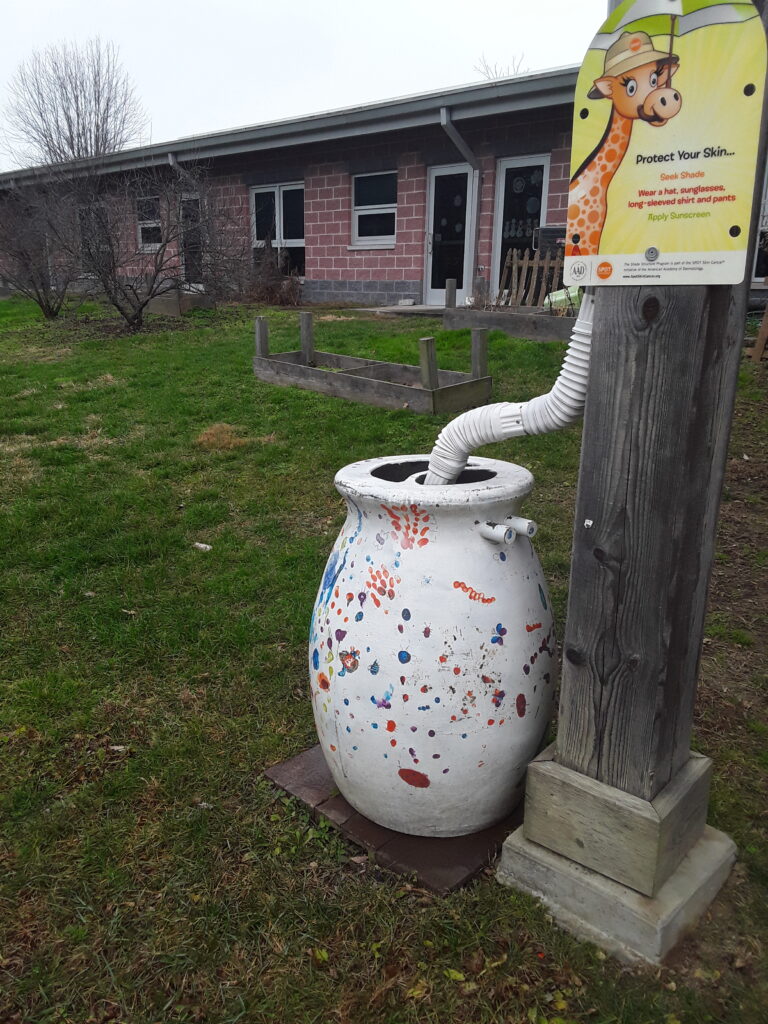
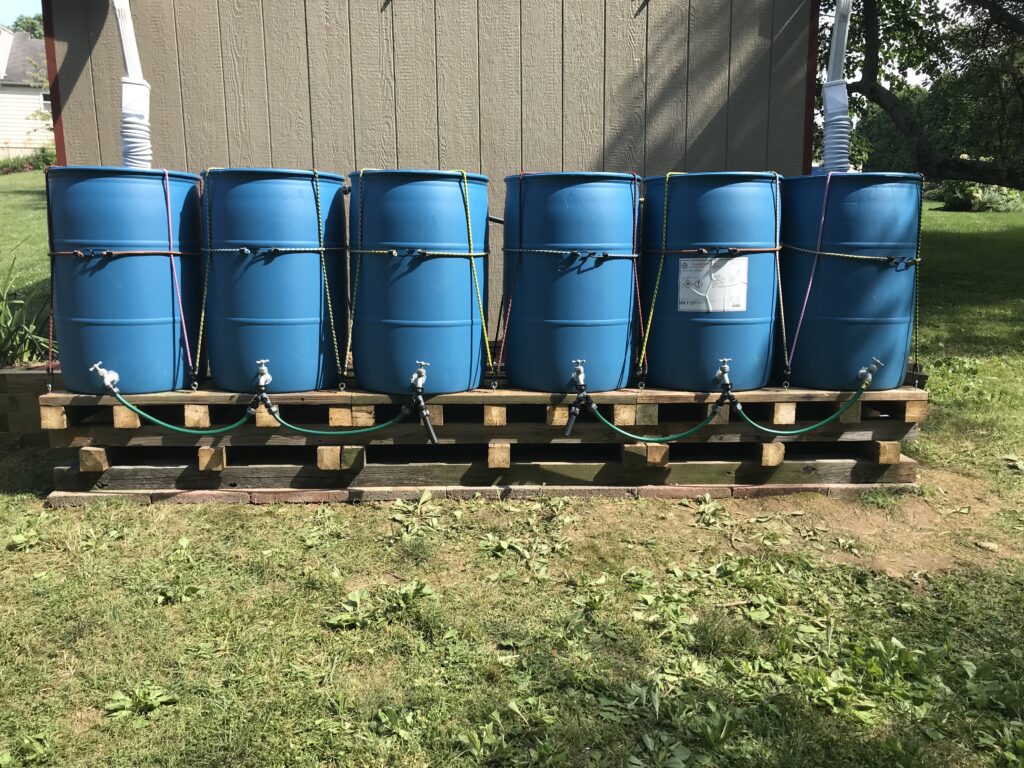

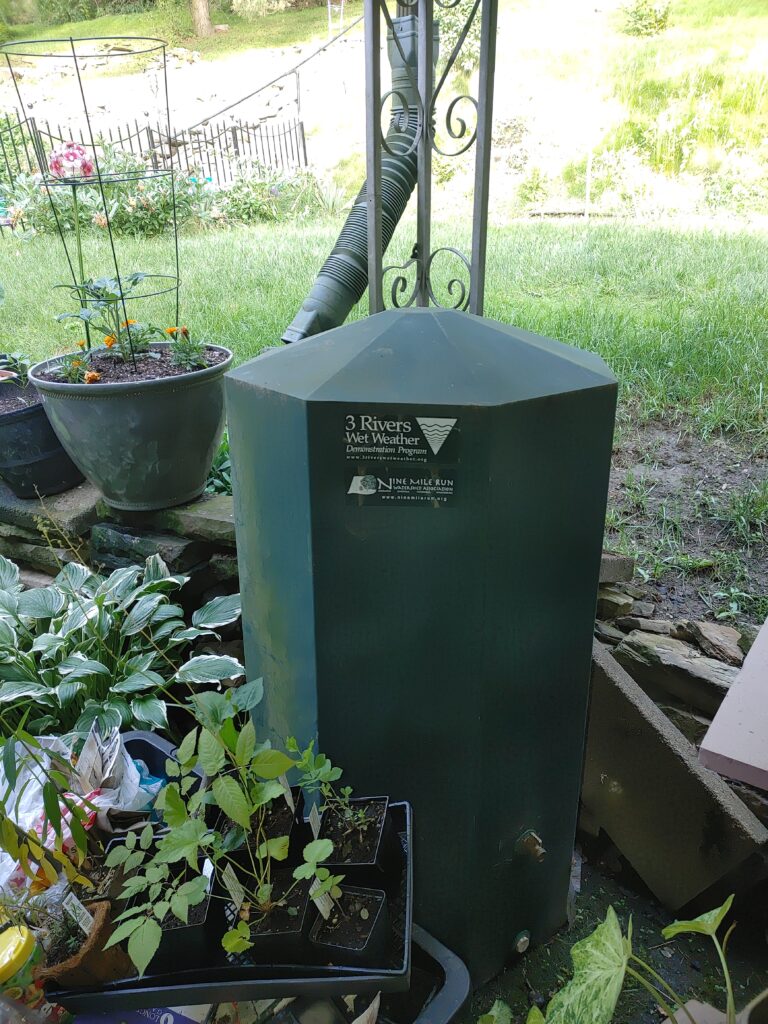
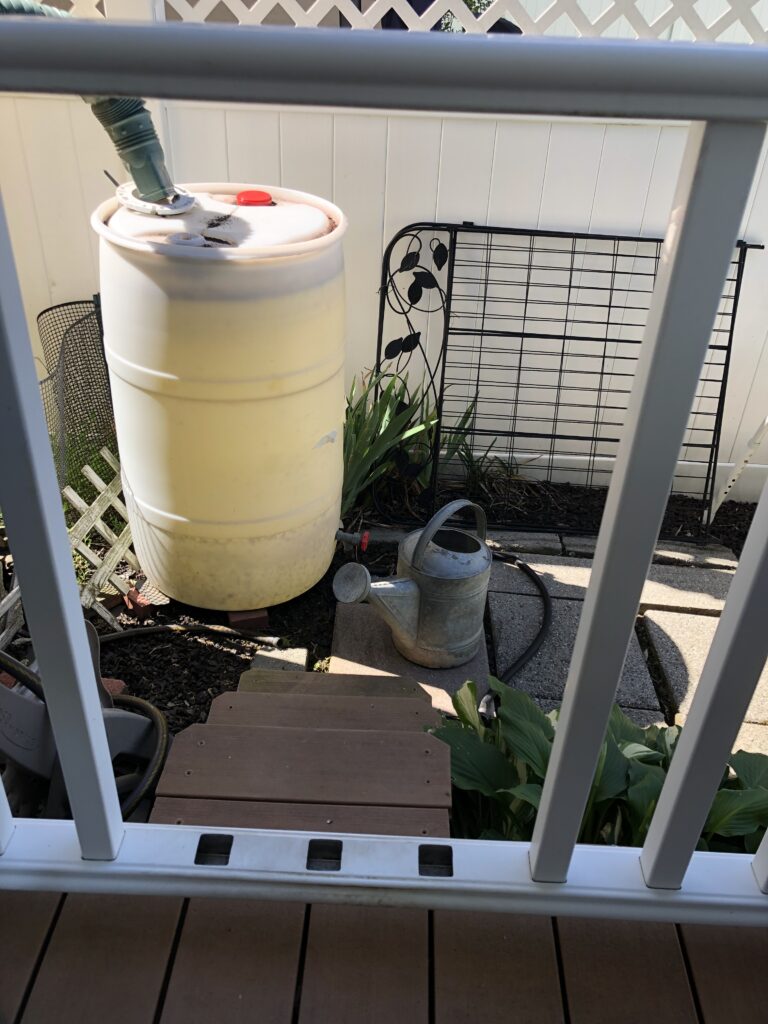
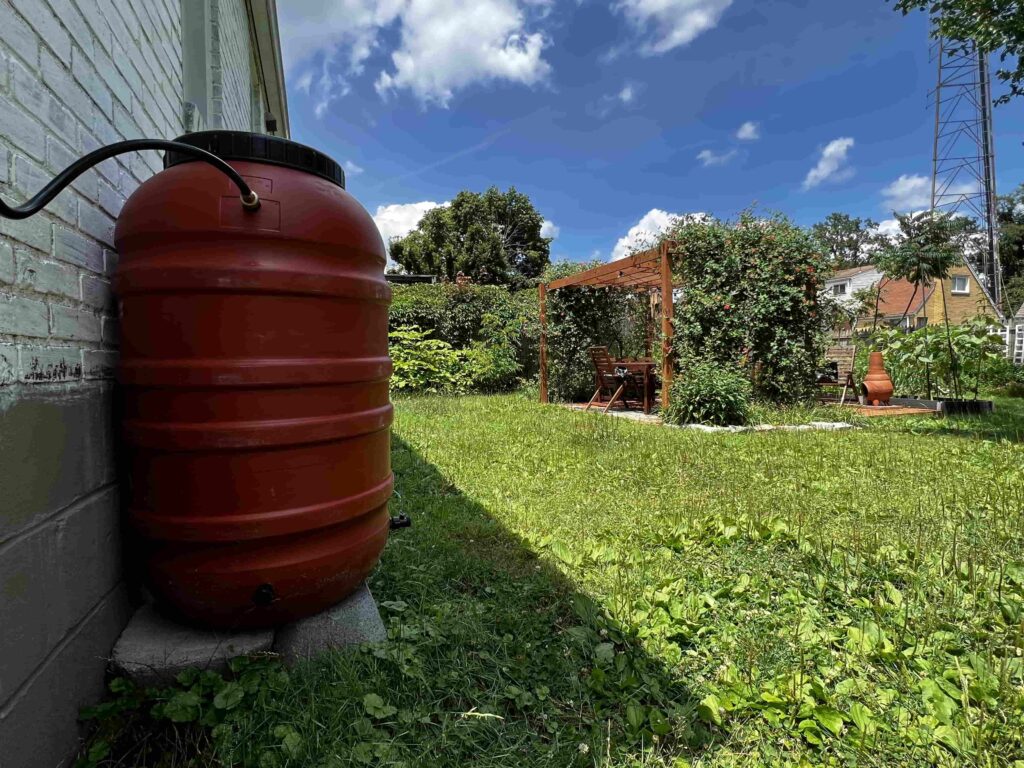

A few important things to consider
Location: Locate barrels under a downspout (ideally one that’s closest to the area where you’ll want to be using the water). Be sure not to place the barrel near utility services or septic tanks.
Roof: The material of your roof will affect how much water can be collected in addition to the quality of the water. The average (25 ft by 40 ft) home roof sheds approximately 600 gallons of water in one hour of moderate rainfall. That means every downspout attached to your roof will divert a portion of those gallons to the barrel underneath it. The more barrels you have, the more rainwater you can collect.
Screens: It’s helpful to place a screen over the area where the downspout meets the gutter in order to help filter out leaves and other debris and to keep the downspouts from getting clogged. A fine-mesh aluminum window screen can help keep insects out of the water in the barrel, as well. Also be sure to keep all openings to the barrel covered.
Installation: The higher you raise the barrel(s), the better the water pressure when you use the spigot. A simple way to raise the barrel is to place it on top of a flat bed of cinder blocks. Start by digging a four-inch deep area the length and width of the cinder block base. Fill the area with small-sized gravel in order to help you level the cinder blocks (this will also help to keep the foundation dry). Line the area with the cinder blocks and then position the barrel on top.
Usage: Rain can wash various contaminants into the water (for example, bird droppings, bacteria, parasites, or chemicals from your roof). Experts advise that water collected in rain barrels not be used for drinking, bathing, or watering plants you intend to eat unless it is specifically treated for these uses.
Filters: There are a variety of filters and disinfection systems that can treat water to acceptable levels of quality. A “first flush diverter” is a simple device that can help reduce contaminants by removing the first water that comes out of the system, since it’s likely to contain the most contaminants. Water intended for drinking needs to be filtered, disinfected, and tested regularly.
Overflow: During particularly heavy rains, it’s possible the barrel may overflow. The small gravel under the cinder blocks will help to drain this excess water away from the barrel. You may also choose to install an overflow port near the top of the barrel. You can attach a hose to the overflow port that diverts excess water directly to a garden or lawn.
Maintenance: Visually inspect the system’s components regularly and make any replacements or repairs immediately. Drain the tank a minimum of every three to five years in order to check for deterioration and clean out debris.